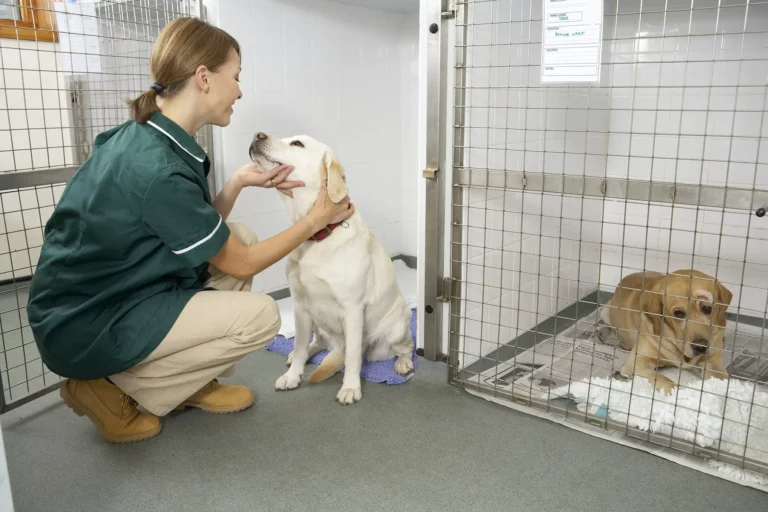Why Does My Dog Suddenly Hate His Bed? 6 Possible Reasons
As a loving pet owner, it can be both puzzling and concerning when your dog suddenly decides they no longer want to sleep in their cozy bed. You might find yourself wondering what’s going on and how you can help them feel comfortable again.
In this blog post, we’ll dive into the possible reasons behind this sudden change in behavior and offer solutions to help your furry friend fall in love with their bed once more.
Understanding the root of the issue is essential to maintaining your dog’s overall well-being and ensuring they have a comfortable and inviting place to rest.
So, let’s explore the potential causes and practical steps you can take to address this perplexing problem.
Key takeaways
Negative experiences can lead dogs to avoid their bed.
Health issues, like arthritis, may make the bed uncomfortable.
Unpleasant odors in the bed can deter dogs.
Environmental changes can disrupt a dog’s comfort level.
Dogs may seek other surfaces due to temperature discomfort.
Identifying and addressing the root cause is vital.
Common Causes for Your Dog’s Sudden Dislike of Their Bed

Understanding why your dog suddenly hates their bed is the first step in addressing the problem.
Here are some common causes that might lead to this behavior:
1. Discomfort and Pain
Sometimes, physical discomfort or pain might cause your dog to avoid their bed. If they associate lying down on the bed with the pain they feel, they may prefer to find a different spot to rest. Some health issues that could cause discomfort include joint pain, arthritis, and injuries.
Observe your dog for signs of pain, like limping or excessive licking, and consult your veterinarian if you suspect a medical issue.
2. Negative Association
Dogs are capable of creating negative associations with certain objects or areas. For example, if your dog experienced a frightening event, like a loud thunderstorm, while resting in their bed, they might begin to associate the bed with fear. This negative association can cause them to avoid their bed altogether.
3. Environmental Factors
Environmental aspects, such as temperature, noise, or lighting, can impact a dog’s preference for their bed. If the room where the bed is located has become too hot, cold, noisy, or bright, your dog might choose to find a more comfortable spot.
Pay attention to changes in your home environment and consider adjusting these factors to help your dog feel at ease on their bed again.
What is my dog thinking?
A change in behavior towards their bed could suggest discomfort – perhaps the bed smells different, or your dog associates it with a negative experience.
Assessing Your Dog’s Bed
If your dog suddenly hates their bed, it’s crucial to evaluate the bed itself to determine if it’s the cause of the issue. Here are some factors to consider:
Bed Quality and Age
The condition of the bed plays a significant role in your dog’s comfort. Over time, a bed can lose its supportive and cushioning properties due to wear and tear. If your dog’s bed has become flat, lumpy, or torn, it might be time to invest in a new one that offers proper support and comfort.
Bed Size and Shape
The size and shape of a dog bed should suit your pet’s size and preferred sleeping position. A bed that’s too small or not designed for your dog’s sleeping habits may cause discomfort and lead to them avoiding it. Observe your dog’s sleeping position and consider upgrading to a bed that meets their specific needs.
Material and Filling
Different dogs may have preferences for various materials and fillings in their beds. Some dogs might be allergic or sensitive to certain fabrics, causing them to avoid the bed. Consider trying beds with different materials, such as memory foam, orthopedic foam, or polyester filling, to find the most comfortable option for your pup.
Additionally, look for beds with removable, washable covers to ensure a clean and fresh sleeping environment.
Tips to Encourage Your Dog to Love Their Bed Again

Once you’ve identified the possible reasons behind your dog’s sudden dislike of their bed, it’s time to take action to help them feel comfortable and secure in their sleeping spot. Here are some practical tips to encourage your dog to love their bed again:
1. Making the Bed More Comfortable
To increase the comfort level of your dog’s bed, you can add some padding, such as a folded blanket or a soft pillow. This extra cushioning might be all your dog needs to find their bed appealing again.
Also, consider placing one of your old shirts on the bed, as your scent can provide a sense of security and comfort for your furry friend.
2. Creating Positive Associations
Help your dog form positive feelings towards their bed by incorporating treats, toys, and praise. Reward your dog with a treat or praise when they approach or use their bed. You can also place their favorite toys on the bed to make it more inviting.
Over time, these positive reinforcements will help your dog associate their bed with good experiences.
3. Adjusting the Bed’s Location
The position of your dog’s bed in your home may impact their willingness to use it. Place the bed in a quiet, cozy, and draft-free area where your dog feels safe and secure.
Also, consider having multiple beds in different parts of the house to provide your dog with a variety of resting spots, allowing them to choose the most comfortable location based on their preference at any given time.
4. Addressing Environmental Factors
Ensure that the area around your dog’s bed is comfortable and conducive to rest. Keep the room at a comfortable temperature, minimize noise levels, and adjust lighting to create a calm and relaxing atmosphere.
Making these adjustments will help your dog feel more at ease, increasing the likelihood that they’ll choose to sleep in their bed.
When to Seek Professional Help
If you’ve tried various strategies to encourage your dog to love their bed again and the issue persists, it might be time to consult a professional. Here’s when to seek help:
Signs That It’s Time for a Vet Visit
If your dog displays symptoms that indicate potential health issues, it’s essential to consult your veterinarian. Signs to watch out for include limping, excessive licking or scratching, changes in appetite or energy levels, and unusual vocalizations like whining or growling.
Addressing any underlying health concerns is crucial for your dog’s overall well-being and comfort.
Consulting a Professional Trainer or Behaviorist
In some cases, your dog’s aversion to their bed may be related to behavioral issues, anxiety, or phobias. A professional dog trainer or behaviorist can help identify the root cause of the problem and offer tailored solutions to help your dog feel comfortable and secure in their bed.
These experts can provide invaluable advice and guidance to improve your dog’s quality of life and strengthen your bond with your furry companion.
Frequently Asked Question
How can I tell if my dog is experiencing pain or discomfort?
Watch for signs like limping, excessive licking, changes in appetite or energy levels, and vocalizations like whining or growling. If you suspect your dog is in pain, consult your veterinarian.
How often should I replace my dog’s bed?
There’s no set timeframe, but pay attention to the bed’s condition, and replace it when it becomes flat, lumpy, or starts to tear.
Can anxiety cause my dog to avoid their bed?
Yes, anxiety can lead to a dog avoiding certain spaces, including their bed. If you suspect anxiety, consult a professional trainer or veterinarian for advice on managing the issue.
How can I properly clean my dog’s bed?
Follow the manufacturer’s care instructions, which usually include machine washing the cover and spot cleaning the interior. Make sure the bed is completely dry before allowing your dog to use it again.
My dog prefers sleeping on the floor or furniture. Should I be concerned?
If your dog is comfortable and not showing signs of pain or discomfort, it’s generally not a concern. However, if you want your dog to use their bed, consider the factors discussed in the blog post and apply the suggested solutions.
Final Thoughts
Helping your dog feel comfortable and secure in their bed is essential for their well-being and overall happiness. By understanding the potential reasons behind your dog’s sudden dislike of their bed and taking action to address these issues, you can create a cozy and inviting resting spot for your beloved pet.
Remember to be patient, and don’t hesitate to seek professional help if necessary. With time, care, and a bit of detective work, you can ensure that your furry friend has the perfect place to sleep and recharge, strengthening the bond between you and your canine companion.






